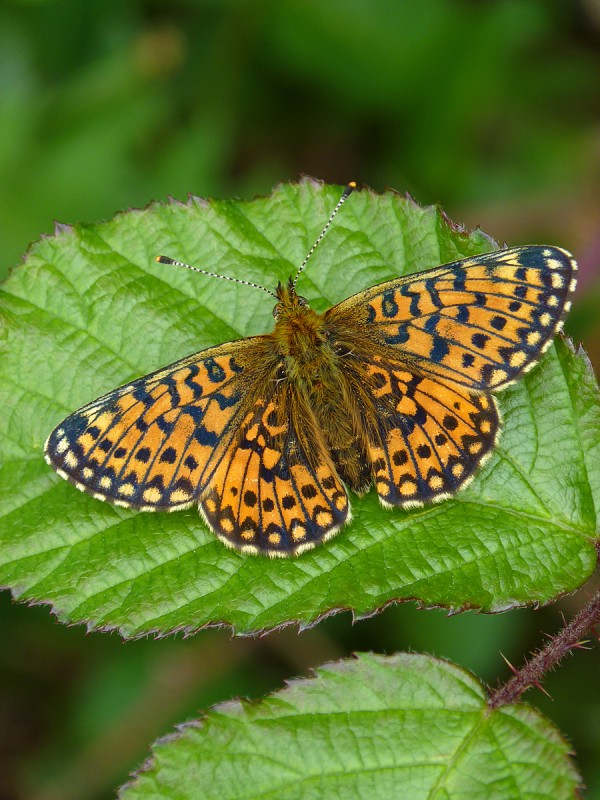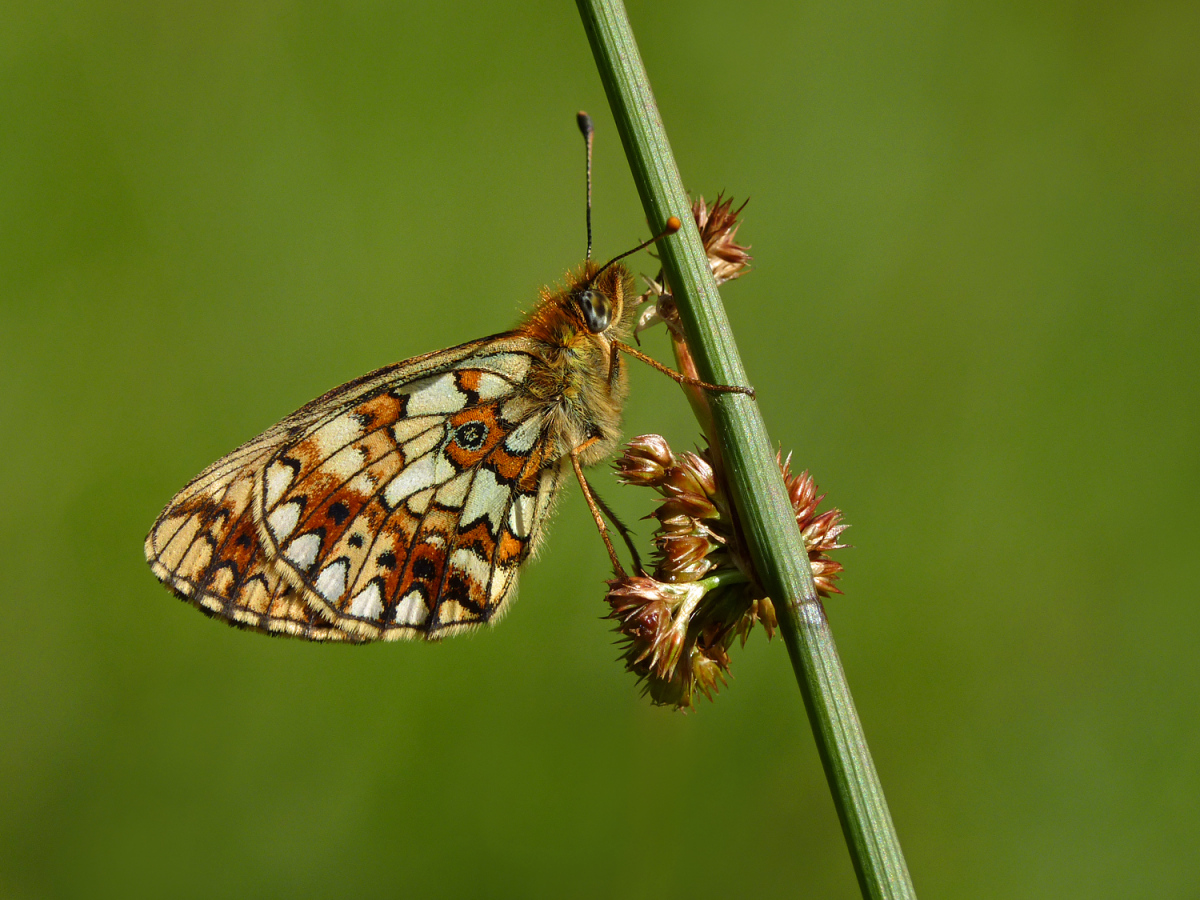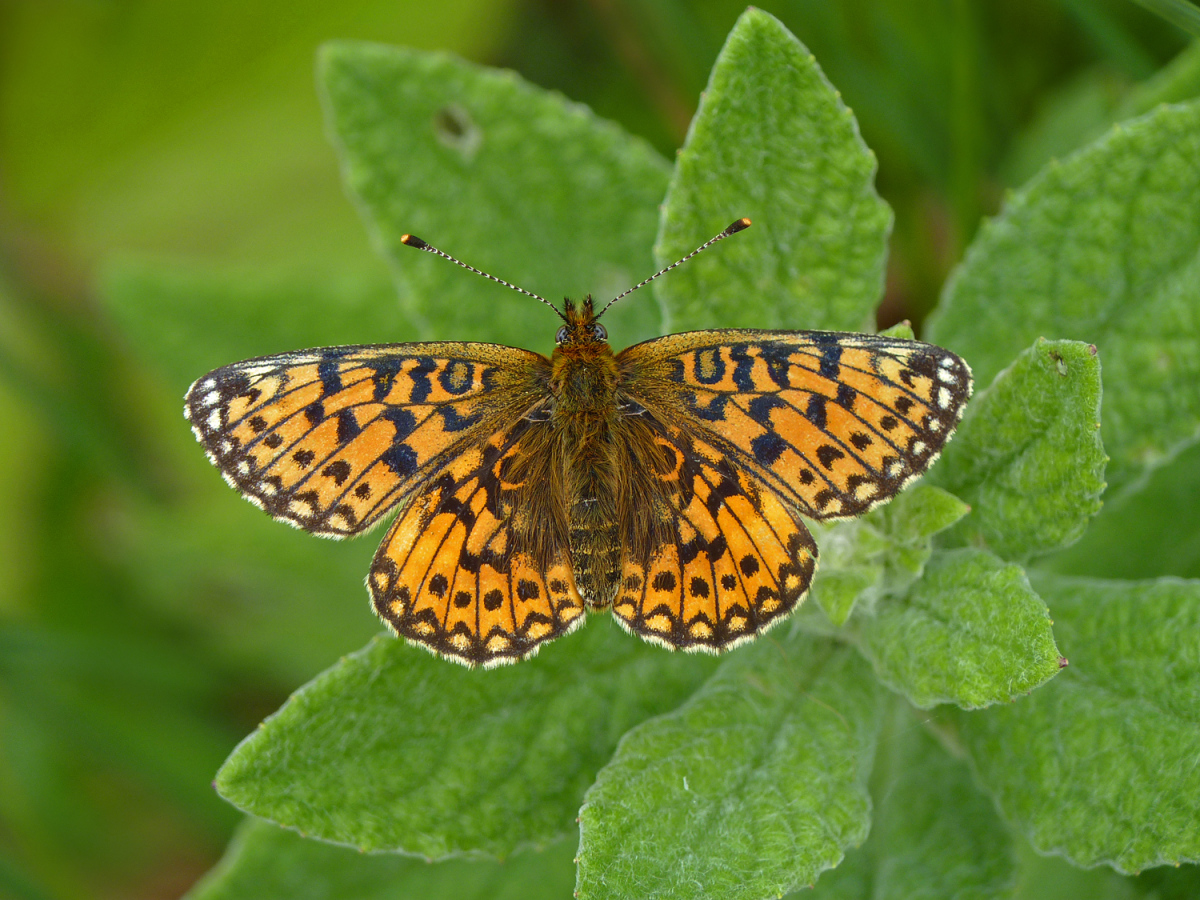
Boloria selene
For today’s butterfly enthusiasts it is hard to believe that Small Pearl-bordered Fritillaries were once common butterflies in Sussex. Colin Pratt in his “History of the Butterflies and Moths of Sussex” reminds us that for the 100 years or more leading up to the mid-1970s some 150 colonies had been discovered. As recently as the 1990-1994 county survey this species was found in 24 tetrads. So, why did this species undergo such a cataclysmic decline?
This fritillary species was very badly affected by changes in woodland management that evolved from the 1950s, onwards. The steep decline of coppicing, together with a huge increase in conifer plantations led to a catastrophic reduction of suitable habitat. This species is dependent on lush clumps of violets which may be found 3-4 years after an area of woodland has been coppiced or cleared. Within 10-15 years a conifer woodland is dark and gloomy and unless there are very generous wide rides, butterfly numbers will rapidly decrease.
The last remaining colony, in Sussex, could be found at Park Corner Heath/Rowland Wood, but with two very cold, wet springs in 2012 and 2013, this colony ceased to exist, with the very last Small Pearl-bordered Fritillary seen on 29/06/2013. As a result of Butterfly Conservation’s “Fritillaries for the Future” project, a re-introduction programme at Rowland Wood began in 2017, and seven years later, as this review is being written, it is gratifying to report that this species is doing well.
The first adults emerge sometime in late May, and occasionally in early June. The only confusion species (in Sussex) is Pearl-bordered Fritillary, and the main point of distinction can be seen on the undersides. Small Pearl-bordered Fritillaries have 7-8 patches of silver surrounding a central pentagonal cell, whereas Pearl-bordered Fritillaries have just two white/silver patches. It is also worth mentioning that in late May, when Small Pearl-bordered Fritillaries are very fresh, Pearl-bordered Fritillaries are very worn (or have disappeared, altogether). Small Pearl-bordered Fritillaries have a very short flight period of around 3-4 weeks.
The only location in Sussex is Rowland Wood and Park Corner Heath. There is a small car park at TQ515147.

Female with open wings – photo by Neil Hulme

Female at roost – photo by Neil Hulme

Male with open wings – photo by Neil Hulme

Male at roost – photo by Neil Hulme

Female with open wings – photo by Neil Hulme

Nectaring on Blackberry blossom – photo by Graham Hubbard
Butterfly Conservation Small Pearl-bordered Fritillary